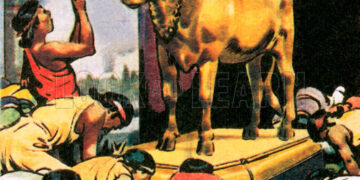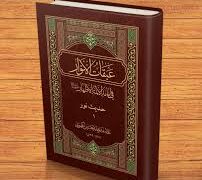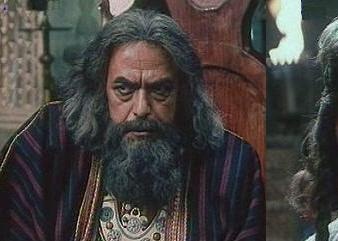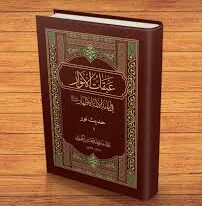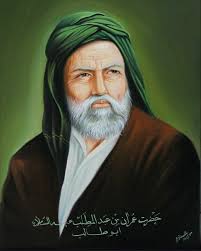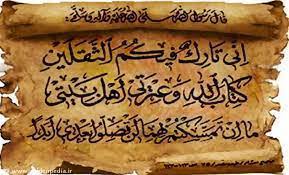Abstract
This article analyzes critical thinking in Abaqat al-Anwar, the prominent work of the late Mir Hamid Hussain, and examines his scholarly critiques and arguments against opposing views, particularly those of Dehlavi. The study emphasizes the importance of adhering to research principles and scientific debate, especially in critiquing religious traditions (hadiths). Specifically, a comparison between the research and argumentative methods in Abaqat al-Anwar and Dehlavi’s critiques of hadiths such as Hadith al-Thaqalayn and Hadith al-Nur highlights fundamental differences in their commitment to scientific standards and fairness in analysis and critique. In Abaqat al-Anwar, Mir Hamid Hussain exemplifies critical thinking by relying on credible sources, emphasizing accuracy and scientific clarity, and upholding the truth in both affirmation and refutation. In contrast, Dehlavi’s critiques often employ selective and one-sided approaches, avoiding thorough and precise examination of Shia arguments. This article ultimately underscores the importance of critical thinking in religious research and critiques, advocating for accuracy, respect for credible sources, and comprehensive analysis.
Introduction
In the realm of science and research, adhering to the ethics of debate and academic integrity is a principle that must hold paramount importance for every scholar and researcher. These ethics not only promote fairness in discussions and critiques but also contribute to scientific progress and have a positive impact on the academic community. Alongside these principles, fidelity in quoting sources, respect for differing viewpoints, and a commitment to truth are fundamental pillars of scholarly research. Observing these principles is vital not only for enhancing an individual’s academic standing but also for fostering a healthy and constructive environment for the exchange of ideas and thoughts.
Mir Hamid Hussain, the esteemed author of the monumental work Abaqat al-Anwar, is a figure who meticulously adhered to these principles in his writings. In his academic debates and critiques, he consistently upheld decorum and respect for his opponents, never crossing the boundaries of fairness or ethics. Driven by a profound commitment to truth, he refrained from distorting statements or viewpoints and always maintained precision and fidelity in citing sources. These qualities not only elevated the scholarly and moral value of his work but also reflected his intellectual and cultural character. In the realm of religious debates and discussions, he stands as a model for researchers and scholars. This article examines some of the principles that Mir Hamid Hussain faithfully followed in his methods of argumentation and reasoning.
Commitment to the Ethics of Debate and Research Principles
Commitment to Academic Ethics in Abaqat al-Anwar“
In his book Abaqat al-Anwar, Mir Hamid Hussain not only engages with great precision in critiquing the arguments of his opponents but also maintains this accuracy and integrity in the process of academic debates. This characteristic is of significant importance in scholarly works, as the correct transmission of information and the preservation of honesty in presenting data are the foundation of any credible scientific research. In religious debates, which are often accompanied by particular sensitivities, if the outcomes of critiques are based on incorrect or distorted information, the scientific credibility of that research is called into question, and the validity of the work is diminished.
a) Why is this characteristic one of the most important scientific principles?
Accurate citation of information and maintaining integrity in critiques are fundamental principles in epistemology. If a researcher or debater resorts to distorting facts or using incorrect information to prove their point, even indirectly, the scientific and ethical credibility of their work is undermined. In religious studies, where criticism of opposing views and arguments requires even greater precision, this characteristic becomes doubly important. For example, in Abaqat al-Anwar, Mir Hamid Hussain meticulously presents each of the Sunni arguments, citing sources and details in full. In critiquing each narration, he not only provides the complete information but also pays attention to the etymology and authenticity of the sources, clearly pointing out any scientific weaknesses in the sources when they exist.
b) The Scientific and Ethical Importance of This Characteristic
The first aspect that makes this characteristic one of the scientific principles is that maintaining integrity in citing information ensures that discussions and exchanges in the academic sphere are conducted properly and based on facts. Without attention to accuracy in citing information and providing correct documentation, academic debates can lead to distortion and misguidance. This not only reduces public trust in scholarly sources but also results in many conclusions and inferences being based on incorrect information.
On the other hand, in religious debates, which are usually conducted between groups with differing views, attention to accuracy in citing information and arguments not only enhances the credibility of the work but also contributes to strengthening the legitimacy and ethics of the debate. When a researcher or debater adheres to scientific principles in their critiques, it demonstrates that their goal is solely to seek the truth, rather than distorting facts to win the debate.
Adherence to academic ethics, especially in critiquing and analyzing the arguments of opponents, is a characteristic that is prominently observed in Abaqat al-Anwar. This feature not only enhances the scientific credibility of the work but also holds special ethical significance in religious debates. By following these principles, Mir Hamid Hussain effectively and substantively critiqued opposing views while simultaneously remaining committed to the ethical principles of debate.
- Ethical Characteristics of the Author of Abaqat al-Anwar“
The author of Abaqat al-Anwar was characterized by great forbearance, patience, and self-control. He responded to insults with politeness, reacted to aggression with gentleness, and confronted injustices with fairness and equity.
Rules to which Mir Hamid Hussain adhered
First Rule: Accurate Citation and Integrity in Research
First Rule: Accurate Citation and Integrity in Research
- The Necessity of Accurately Quoting the Opponent’s Words
One of the rules of research is that the researcher must accurately and faithfully quote the opponent’s words regarding the issue at hand, without any additions or omissions. After providing a complete and correct citation of their words, the researcher should respond in the best possible way, highlighting weaknesses and points open to critique.
- The Method of the Author of Abaqat al-Anwar in Quotation and Critique
Shia scholars have also employed this method in their research, and the author of Abaqat al-Anwar follows the same approach. At the beginning of his discussion, he quotes a complete passage from Dehlawi, the author of Al-Tuhfa al-Esna Ashariyya, without omitting or cutting any part. He also refers to the explanations that Dehlawi has added in the margins of his text, whether they are arguments, reasons, or clarifications.
- The Use of Refutation Methods and Resolutive Responses
Then, Mir Hamid Hussain (may Allah have mercy on him) uses various methods, such as refutation, opposition, or resolutive responses, to invalidate and reject the arguments. However, the Sunni scholars did not adhere to this rule.
Second Rule: Use of the Opponent’s Credible Sources
The Sunni’s Failure to Adhere to Research Principles
In critiquing the Hadith of Thaqalayn, Dehlawi attempts to respond to the Shia argument regarding the hadith in which the Prophet (PBUH) said, “I am leaving among you two precious things: the Book of God and my Ahl al-Bayt. As long as you hold fast to both of them, you will never go astray.” However, he not only ignores the Shia reasoning based on this hadith but also fails to carefully examine the meaning of the hadith itself. Shia scholars emphasize the importance of adhering to the Ahl al-Bayt alongside the Quran, considering it as evidence of the special status and authority of the Ahl al-Bayt before God and the Prophet.
However, Dehlawi, in his critique of this hadith, makes no reference to the Shia reasoning. This indicates that he does not adhere to proper and fair scientific research principles. In fact, selectively using the hadith and disregarding the opponent’s arguments not only undermines academic integrity but also questions the validity and accuracy of the critiques. This approach is far removed from the fundamental principles of scientific and religious debate, as it pursues specific goals without considering the realities and reasons of the opposing side.
This reflects a lack of attention to the principles of scientific debate and an implicit distortion of the facts. In fact, such critiques not only fail to advance the academic discussion but also lead to endless conflicts that, instead of improving and elevating ideas, contaminate the academic space.
Failure to Address the Shia Argument in the Hadith of Light
In the Hadith of Light, the Prophet (PBUH) said, “Ali and I were created from the same light,” and Dehlawi critiques this hadith, stating, “This hadith does not provide evidence for what the Imamiyyah claim.” However, the point that is overlooked here is that Dehlawi makes no reference to the Shia reasoning behind this hadith. Shia scholars consider this hadith as evidence for the special authority of Imam Ali (AS) and his unique spiritual connection with the Prophet (PBUH), viewing it as proof of the high status of the Ahl al-Bayt.
Instead, Dehlawi simply rejects this hadith without addressing how the Shia reference it. This approach is not only unscientific but also a form of oversimplification and outright dismissal, with no effort made to understand or thoroughly examine the reasoning of the opposing side.
The failure to address the Shia argument in the Hadith of Light indicates that a superficial and one-sided approach to religious and academic discussions can lead to misunderstandings and false prejudices. Critiques that do not delve into the depth of the matter and only view the issue from a single perspective cannot contribute to academic and religious progress; instead, they will only cause further confusion.
The Necessity of Using the Opponent’s Accepted Sources
One of the fundamental principles in research and scientific debate is the use of sources accepted by the opposing side. This means that the researcher should use sources that the opponent considers credible in order to examine the validity of a topic or hadith, rather than selecting sources arbitrarily. In religious debates between Shia and Sunni, this principle is particularly important, as using the credible sources of the opposing side helps ensure that the critiques are fair and accurate.
For example, if Sunnis reference a particular hadith, Shia scholars should use the same sources and base their analyses on those texts. This method not only adds credibility to the Shia critiques but also prevents accusations of distortion and selective sourcing.
Using sources emphasized by the opposing side helps create an atmosphere of respect and fairness in scientific and religious discussions. In fact, this method reflects respect for the principles of research and scientific thinking, which in turn improves the quality of religious debates and discussions. Ignoring this rule can lead to further divisions and increase distrust between the parties, causing missed opportunities for mutual understanding and collaboration.
Rule Three: Stating the Truth and Accepting It in Both the Argumentation and Critique Process
Acceptance of the Truth in Both the Affirmation and Rejection Processes
In the book ‘Abqat al-Anwar, the author has made a careful and clear scientific effort to present the truth in all its various aspects. This method is important not only in dealing with opponents but also in examining different texts and hadiths. When engaging in debates with the opposing side, he never refrains from presenting complete and accurate narrations and always includes their details with precision. This transparency and presentation of the truth through the accurate citation of sources and references reflect respect for scientific principles and demonstrate the author’s commitment to the pursuit of truth. Conversely, when the opponent presents a hadith, the author of ‘Abqat al-Anwar similarly adheres to this approach, citing the hadith in full along with its references. This approach is scientifically valid and allows the reader to easily verify the sources and gain a clearer understanding of the subject. The author’s precise and documented critiques have made him one of the most prominent commentators and critics of hadith. This approach, in fact, reflects a deep scientific perspective and impartiality, allowing the audience to analyze and assess hadiths from a comprehensive and fair viewpoint and understand them from various angles.
Acknowledgment of the Hadith Sources from Ahl al-Sunnah
One of the prominent features of the author of Abaqat al-Anwar‘ is that at every stage of critique, he never overlooks the facts. He never hesitates to mention the authentic chains of narrations (Isnad) of the Hadiths cited by Ahl al-Sunnah. Especially when critiquing the arguments of opponents, such as when addressing the Hadith “Follow those who come after me, Abu Bakr and Umar” from Dehlawi, he does not ignore or distort this narration. On the contrary, with precision and respect for all the Isnad of the Hadith, he presents it as narrated by five reputable companions. This action demonstrates honesty and transparency in dealing with sources. In fact, the author of ‘Abaqat al-Anwar‘ sets an example of scholarly fairness and professionalism through this approach. In the academic and research world, such a method can be considered a standard for critiquing and evaluating religious texts because science should be based on truth and available evidence, avoiding omissions or unscientific alterations. Thus, he not only emphasizes his own integrity but also, by clarifying sources and narrators, enhances the level of knowledge and understanding for the readers.
Acceptance of facts and refutation of arguments.
The author of Abqāt al-Anwār* accepts the facts and employs a scientific and precise method in analyzing and refuting the arguments of opponents. In the next step, after accepting the authentic sources of the hadith, he proceeds with a more detailed evaluation of it. For example, in his critique of a hadith from the Sunnis, he utilizes their reliable sources such as *al-Muṣannaf* by Ibn Abi Shaybah, *al-Musnad* by Ahmad, *Ṣaḥīḥ al-Tirmidhī*, and *al-Mustadrak* by al-Ḥākim. These sources are among the most authoritative and fundamental hadith collections in Sunni tradition, which the author of *Abaqāt al-Anwār uses to meticulously analyze the chain of narrators and the text of the hadith. This not only adds credibility to his critiques but also enables the reader to recognize the authenticity of the sources and the precision in their selection. Therefore, the refutation of arguments and the analysis of chains of narration carried out by the author of `Abqāt al-Anwār is not only based on scientific principles but also relies on the most authoritative sources, providing a clear and scholarly perspective for the readers. This accurate and professional approach ensures that the focus remains on the truth and prevents distortion or significant errors in the critiques.
The critique of the arguments of the Sunnis and their failure to adhere to the principles of scholarly research.
In his critiques of the Sunni scholars, the author of ‘Abqat al-Anwar notices that some of them fail to adhere to the principles and rules of scholarly research. For example, in his critique of the Hadith al-Thaqalayn, Dahlawi quotes only part of the Hadith and neglects to mention the number of narrators. This is a clear violation of research principles. While he refers to only a short phrase of the Hadith, he avoids stating that the Hadith has been narrated by more than twenty companions. Such disregard for the narrators and their chains of transmission prevents the true meaning of the Hadith from being properly understood and distorts its real message. In Hadith science, accepting and analyzing all aspects of a Hadith, including the number of narrators and the authenticity of its chain, is essential. Thus, it seems that Dahlawi has failed to adhere to scholarly and research principles in this critique. This stands in stark contrast to the methodical and precise approach of the author of ‘Abqat al-Anwar, who presents all the sources and details with clarity, highlighting the differences in methodology and adherence to research principles between the two approaches.
The individuals who narrated the Hadith of Thaqalayn.
The authenticity and credibility of the Hadith of Thaqalayn are clearly demonstrated by the numerous narrations from different companions. Among these companions are figures such as Amir al-Mu’minin Ali (peace be upon him), Jabir ibn Abd Allah Ansari, Zayd ibn Arqam, Abu Sa’id al-Khudri, Hudhayfah ibn Asid, Khuzaymah ibn Thabit, and other prominent personalities. The number of these narrators is recognized as mutawatir (mass-transmitted) not only among the Shi’a but also by the Sunni scholars. In fact, when such a large number of narrators transmit a hadith, it is no longer merely a personal narration, but, due to its widespread transmission, is considered an established truth. This point should have been seriously considered in the critiques from Sunni scholars, but it is often overlooked. In this regard, the author ofA’baqat al-Anwar, by relying on such evidence and mentioning the names of credible narrators, demonstrates that the Hadith of Thaqalayn is mutawatir in the various Sunni sources and that there is no doubt regarding its authenticity.
Textual distortions in the narrations from Sunni sources.
One of the important points in the critiques provided by the author of ‘Abqat al-Anwar is attention to potential distortions in the narrations from Sunni sources. Dahlawi, when narrating the Hadith of Thaqalayn from some sources, either intentionally or mistakenly omits part of the text. In contrast, in reliable Sunni sources like Sahih al-Tirmidhi and Musnad Ahmad, the hadith is presented in full, including an additional phrase that specifically states: “My family, and these two will never separate until they join me at the pond.” The omission of this crucial part of the hadith not only appears as a textual distortion but also diminishes the precise meaning of the hadith and alters its core concepts. The author of ‘Abqat al-Anwar, with scientific precision, and through detailed analysis of such distortions, helps readers become aware of problems in textual narrations, enabling them to gain a correct understanding of the narrations. This point highlights the importance of accuracy and integrity in the narration and analysis of hadiths.
Critical Thinking in ‘Abqat al-Anwar: Lessons from the Scientific Critique and Reasoning of Mir Hamid Against Dahlawi.
Analysis of the Text Based on Critical Thinking.
Critical thinking involves the careful, unbiased, and thorough analysis of information and sources. This type of thinking plays a crucial role in the critique and analysis of hadiths and religious texts, as it allows the researcher to explore various aspects of a subject without preconceptions and to avoid cherry-picking or distorting information. In this text, two different approaches to the critique of hadith and scientific research are examined: one by the late Mir Hamid in Abaqbat al-Anwar and the other by Dahlawi. Each approach reflects, in its own way, the value and importance of critical thinking or the lack thereof.
The scientific and precise approach of the late Mir Hamid.
In the composition of Abqat al-Anwar, the late Mir Hamid, following critical thinking, has consistently used reliable sources with precision and transparency. He has never been afraid of accepting the truth and has always quoted the full and accurate texts of sources and hadiths. He clearly presents all the sources to the audience so that individuals can arrive at more precise analyses themselves.
In critical thinking, one of the fundamental principles is that an individual should use all available sources and evidence and analyze them meticulously. In other words, the primary goal of critical thinking is to reach the truth without being influenced by prejudices or biases. The late Mir Hamid, by providing all his sources and scientific analyses, not only distances himself from distortion and inaccuracy but also enables the audience to examine topics more carefully and arrive at their own conclusions.
Dehlawi’s approach and disregard for the principles of critical thinking
In contrast, Dehlawi, in his criticism of the Hadith al-Thaqalayn and other Hadiths from Sunni sources, clearly does not follow the rules of research and critical thinking. In some cases, by selectively narrating Hadiths and ignoring the opposing arguments, his critiques lack scientific depth and precision. For example, in his critique of the Hadith al-Thaqalayn, he avoids mentioning the numerous narrators of the Hadith, even though it has been narrated by more than twenty companions, which adds to the Hadith’s credibility. The omission of such details not only weakens the critique but also raises doubts about the validity of Dehlawi’s reasoning.
In critical thinking, overlooking credible sources or distorting information not only undermines the validity of the critique but also misleads the audience and creates further gaps in understanding the truth. Such behaviors go against scientific and research principles because in critical thinking, all evidence and sources must be thoroughly examined, and no crucial information should be overlooked.
Examining the Importance of Sources Approved by the Opposing Party
Another important principle in critical thinking is the use of credible and approved sources from the opposing party. In scientific and religious critiques, carefully examining the original sources and documents that the opposing party also considers valid demonstrates fairness and precision in evaluation. In ‘Abqat al-Anwar, Mir Hamid, with respect to the sources of Ahl al-Sunnah, bases his critiques on their credible sources, while Dehlawi is completely oblivious to this principle, citing only sources that align with his own viewpoint.
This point highlights the importance of neutrality and fairness in analysis. In critical thinking, one must be able to use all available sources and present their critique based on documented and credible evidence. This approach contributes to scientific progress and prevents bias and one-sidedness.
Conclusion
Based on the above analysis, it can be concluded that critical thinking, as a scientific and rational approach to analyzing hadiths and religious texts, is of great importance. A system or method based on the principles of critical thinking is reliable and valuable for research and investigation. In contrast, a system founded on distortion, selective reporting, and deception will naturally face fundamental problems in thinking and scientific critique. In this context, the late Mir Hamid in `Abqat al-Anwar has followed the principles of critical thinking and, through scientific precision, conducted accurate and transparent analyses of hadiths and sources, contributing to the enhancement of both scientific and religious knowledge. On the other hand, Dehlavi, by disregarding many principles of research and scientific critique, fails to conduct accurate analyses of hadiths, and his critiques lack credibility and scientific rigor.
The assistance of Amir al-Mu’minin: A Call to Share the Truth
If this writing serves the purpose of enlightenment and supporting Amir al-Mu’minin Ali (peace be upon him), sharing and spreading it is, in essence, a form of support for the same great figure. We kindly ask you, dear readers, to share this article with others and express your respectful opinions in the comments. We also invite our esteemed opponents to share their perspectives so that we may engage in a constructive and scholarly dialogue that will aid in uncovering the truth. Please also follow the subsequent sections.
An interpretation of the esteemed book Nafahāt al-Azhār, written by Ayatollah Sayyid Ali Milani.
Author: Hamed Sarem


